Stop Black-and-White Thinking About Food
Stop Black-and-White Thinking About Food
When it comes to food and nutrition, black-and-white thinking is incredibly common—and incredibly unhelpful. Labeling foods as “good” or “bad,” “right” or “wrong,” or even judging ourselves as a “failure” for eating certain things can sabotage our well-being and create an unhealthy relationship with food. It’s time to shift the narrative.
The Problem with Black-and-White Thinking
Black-and-white thinking is rigid. It doesn’t leave room for context, nuance, or real life. Here’s how this mindset shows up in conversations about food:
Good vs. Bad Foods: “That’s bad for you.” But is it really? Eating a slice of cake or a bowl of pasta doesn’t define your health. What matters is your overall dietary pattern, not one specific meal or food.
All-or-Nothing Mentality: “I already messed up today, so I might as well eat everything I want.” This mindset often leads to overindulgence and guilt instead of balance.
Cheating or Failing: Viewing food choices as moral failures—“I cheated,” or “I slipped”—leads to unnecessary guilt and stress. Food is nourishment, not a moral decision.
What Really Matters
Your health isn’t determined by a single food, meal, or even day of eating. It’s about patterns over time. The occasional indulgence—a milkshake, fries, pizza—does not harm your health. The chronic overconsumption of nutrient-poor foods combined with a lack of nutrient-dense options increases the risk of long-term health issues.
This doesn’t mean you need to aim for perfection. Instead, aim for consistency. Balance is about making choices that work for you most of the time and giving yourself grace when they don’t.
Why Food Guilt is Harmful
When we label certain foods as “bad” or view ourselves as failing for eating them, we create guilt. Guilt around food can:
Diminish Enjoyment: Food should be a source of joy, nourishment, and connection—not stress or shame.
Lead to Restriction-Overeating Cycles: Feeling guilty can push us to restrict certain foods, leading to cravings and overindulgence later.
Harm Mental Health: Constantly feeling like you’re failing fosters a negative self-image and a toxic relationship with food.
How to Break Free from Black-and-White Thinking
Embrace Food Neutrality
No food is inherently “good” or “bad.” A cookie is a cookie. A salad is a salad. Each has its place in a balanced diet. Recognize that foods provide different nutrients and serve different purposes—sometimes for physical health, sometimes for emotional satisfaction.
Focus on Patterns, Not Perfection
Instead of fixating on one meal or day, look at your overall habits. If you eat nourishing, nutrient-rich foods most of the time, the occasional treat is not a problem.
Learn from Your Body
If certain foods make you feel sluggish or unwell, listen to those signals—not as judgment, but as information. Adjust your choices to support how you want to feel.
Set Realistic Goals
Instead of rigid rules, set flexible goals. For example:
“I’ll include veggies in at least two meals today.”
“I’ll savor my dessert slowly instead of eating it while distracted.”
Celebrate Progress, Not Perfection
If you’ve made steps toward eating more healthfully, celebrate that! Health is a journey, not a destination.
Food is not the enemy, and eating isn’t a moral act. You don’t need to feel guilty about enjoying a holiday cookie, grabbing fries with friends, or skipping a green smoothie one day. What matters most is how you approach your relationship with food overall.
When you let go of black-and-white thinking, you create space for balance, joy, and true nourishment. Are you ready to change your mindset and find peace with food? Let’s chat!
Real World Nutrition Refreshed: I am revitalizing and updating my archive of blogs and re-publishing them. Stay tuned as I review, update, refresh, and re-share these posts to provide you with even more valuable information on nutrition, health, and overall wellness—and keep things timely. A portion of this blog was initially posted on December 13, 2022, and is updated here.

